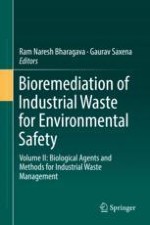2020 | OriginalPaper | Buchkapitel
20. Bioremediation of Melanoidins Containing Distillery Waste for Environmental Safety
verfasst von : Vineet Kumar, Ram Chandra
Erschienen in: Bioremediation of Industrial Waste for Environmental Safety
Verlag: Springer Singapore
Aktivieren Sie unsere intelligente Suche, um passende Fachinhalte oder Patente zu finden.
Wählen Sie Textabschnitte aus um mit Künstlicher Intelligenz passenden Patente zu finden. powered by
Markieren Sie Textabschnitte, um KI-gestützt weitere passende Inhalte zu finden. powered by
